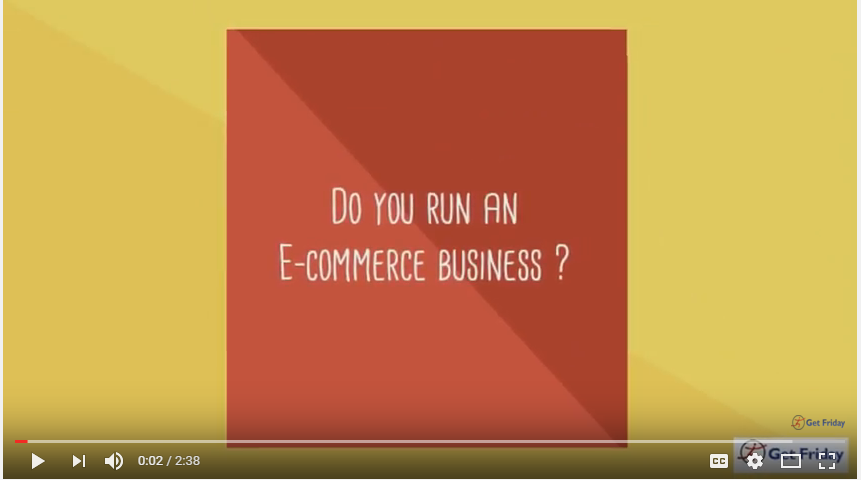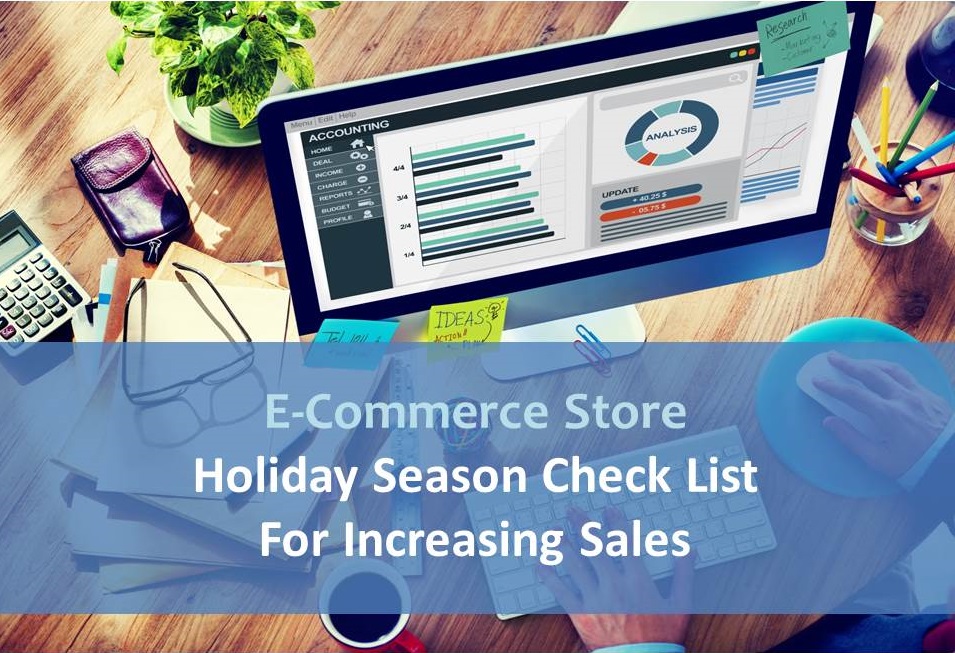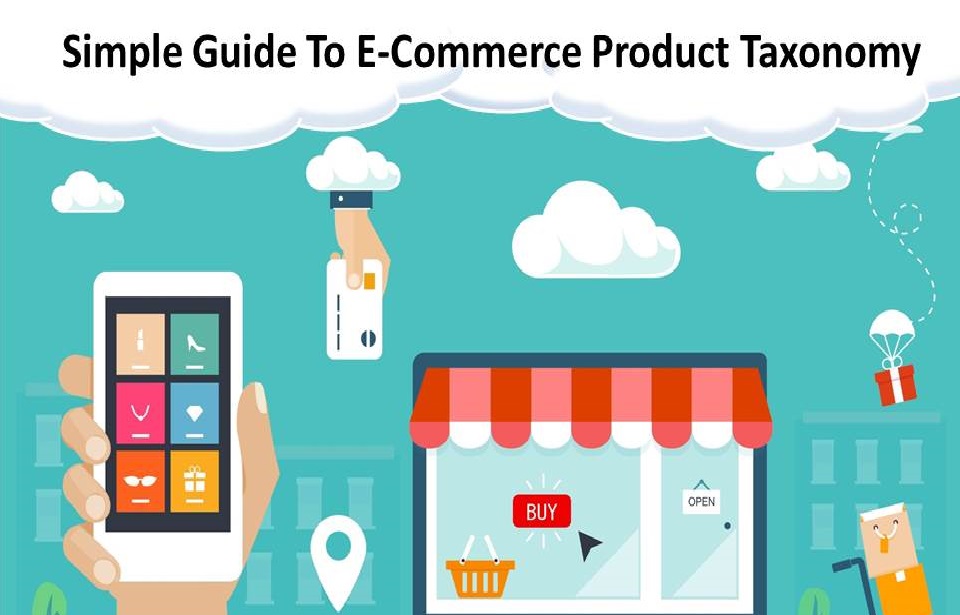E-Commerce Advantage with GetFriday
If you are over-whelmed by your e-commerce business by the number of activities, GetFriday is here to help you with your business. We have skilled and experienced executives to help you with your e-commerce business needs. The key tasks which GetFriday undertakes on behalf of e-commerce business are inventory management, order processing, order tracking and customer support. Inventory Management The GetFriday executive logs into the client’s CRM and downloads the daily inventory files. The executive then checks and updates the client on the daily status of the products such as in stock, out of stock and approaching safety stock, to track for the availability of each product. Order Processing When an order is placed on the website by a customer, the GetFriday executive then co-ordinates with the vendor and places the order with them to be delivered to the customer. The executive also cross verifies the shipping address and the quantity officially placed with the supplier to fulfill orders. Order tracking Once the product has been shipped, the GetFriday executive co-ordinates with the logistical partner to get the tracking code. The executive will then proceed to verify the tracking code and updates the customer to help them track the order. Customer Support GetFriday executives are well trained to attend to all sorts of customer queries through calls and emails with multiple back ups so that regular work is not interrupted. If you are overcome by increased orders, GetFriday will be able to handle all tasks with multiple back-up assistance meeting all quality standards and deadlines. We provide 24/7 assistance with cost effective solutions high domain expertise and timeliness are other qualities of our executives. What are you waiting for? To get started, visit our website @ www.getfriday.com or write to us at support@getfriday.com or get an understanding of all the e-commerce process which GetFriday supports with the video Managing Major Tasks for eCommerce Businesses 0:00 Hello There! Do you run an E-commerce business? Are you overwhelmed by the number of tasks? 0:06 Do not worry!! GetFriday is here to help you with your business tasks. 0:11 First let me introduce myself. I am Kumar,Project manager for e-commerce businesses in GetFriday. 0:18 I will walk you through the processes we support for e-commerce businesses. 0:22 We have experienced and skilled executives to take care of your e-commerce business needs. 0:27 The key tasks we undertake on behalf of e-commerce businesses are Inventory management, Order processing, Order tracking, and Customer support. I am really excited to walk you through each task. 0:39 Let us start with Inventory management. 0:42 Your GetFriday executive will log into your CRM and download the inventory files daily at the start of the day. 0:47 Your executive will then check and update you about the daily status of the products i.e. In-stock, Out-stock, and approaching safety stock to keep track of each product’s availability in the stock. 1:01 Second key task is ‘Order processing’. 1:04 When an order is placed on your website by a customer, your GetFriday executive coordinates with the vendors and places the order with them to be delivered to the customer. 1:14 Your assistant will also cross verify the details such as shipping address and the quantity ordered for efficiently placing the order with the suppliers. 1:20 Now we come to the Third major task which is ‘Order Tracking’. 1:22 Once the product is shipped, your executive will coordinate with your logistics partner to get the tracking code. Your executive will then proceed to verify the tracking code and update the customers to help them track the order. 1:36 The other task undertaken for e-commerce businesses is ‘Customer support service”. Your GetFriday executive is well trained in handling all sorts of customer queries through calls and emails. 1:48 Your assistant will take care of your daily customer care support activities such as emails, calls, etc. with multiple back-ups so that the regular work continues uninterrupted. 2:00 And if you find yourself with increased orders, do not worry!! GetFriday will be able to handle all the tasks with multiple back-up assistants meeting all the quality standards and deadlines. 2:11 We provide 24/7 assistance with cost effective solutions. High domain expertise and timeliness are other major qualities of GetFriday’s executives. 2:22 Then what are you waiting for? Let’s get started. 2:32 Visit our website www.getfriday.com to know more about the services. Or write an email to support@getfriday.com with your requirements.
E-Commerce Advantage with GetFriday Read More »
If you are over-whelmed by your e-commerce business by the number of activities, GetFriday is here to help you with your business. We have skilled and experienced executives to help you with your e-commerce business needs. The key tasks which GetFriday undertakes on behalf of e-commerce business are inventory management, order processing, order tracking and customer support. Inventory Management The GetFriday executive logs into the client’s CRM and downloads the daily inventory files. The executive then checks and updates the client on the daily status of the products such as in stock, out of stock and approaching safety stock, to track for the availability of each product. Order Processing When an order is placed on the website by a customer, the GetFriday executive then co-ordinates with the vendor and places the order with them to be delivered to the customer. The executive also cross verifies the shipping address and the quantity officially placed with the supplier to fulfill orders. Order tracking Once the product has been shipped, the GetFriday executive co-ordinates with the logistical partner to get the tracking code. The executive will then proceed to verify the tracking code and updates the customer to help them track the order. Customer Support GetFriday executives are well trained to attend to all sorts of customer queries through calls and emails with multiple back ups so that regular work is not interrupted. If you are overcome by increased orders, GetFriday will be able to handle all tasks with multiple back-up assistance meeting all quality standards and deadlines. We provide 24/7 assistance with cost effective solutions high domain expertise and timeliness are other qualities of our executives. What are you waiting for? To get started, visit our website @ www.getfriday.com or write to us at support@getfriday.com or get an understanding of all the e-commerce process which GetFriday supports with the video Managing Major Tasks for eCommerce Businesses 0:00 Hello There! Do you run an E-commerce business? Are you overwhelmed by the number of tasks? 0:06 Do not worry!! GetFriday is here to help you with your business tasks. 0:11 First let me introduce myself. I am Kumar,Project manager for e-commerce businesses in GetFriday. 0:18 I will walk you through the processes we support for e-commerce businesses. 0:22 We have experienced and skilled executives to take care of your e-commerce business needs. 0:27 The key tasks we undertake on behalf of e-commerce businesses are Inventory management, Order processing, Order tracking, and Customer support. I am really excited to walk you through each task. 0:39 Let us start with Inventory management. 0:42 Your GetFriday executive will log into your CRM and download the inventory files daily at the start of the day. 0:47 Your executive will then check and update you about the daily status of the products i.e. In-stock, Out-stock, and approaching safety stock to keep track of each product’s availability in the stock. 1:01 Second key task is ‘Order processing’. 1:04 When an order is placed on your website by a customer, your GetFriday executive coordinates with the vendors and places the order with them to be delivered to the customer. 1:14 Your assistant will also cross verify the details such as shipping address and the quantity ordered for efficiently placing the order with the suppliers. 1:20 Now we come to the Third major task which is ‘Order Tracking’. 1:22 Once the product is shipped, your executive will coordinate with your logistics partner to get the tracking code. Your executive will then proceed to verify the tracking code and update the customers to help them track the order. 1:36 The other task undertaken for e-commerce businesses is ‘Customer support service”. Your GetFriday executive is well trained in handling all sorts of customer queries through calls and emails. 1:48 Your assistant will take care of your daily customer care support activities such as emails, calls, etc. with multiple back-ups so that the regular work continues uninterrupted. 2:00 And if you find yourself with increased orders, do not worry!! GetFriday will be able to handle all the tasks with multiple back-up assistants meeting all the quality standards and deadlines. 2:11 We provide 24/7 assistance with cost effective solutions. High domain expertise and timeliness are other major qualities of GetFriday’s executives. 2:22 Then what are you waiting for? Let’s get started. 2:32 Visit our website www.getfriday.com to know more about the services. Or write an email to support@getfriday.com with your requirements.






